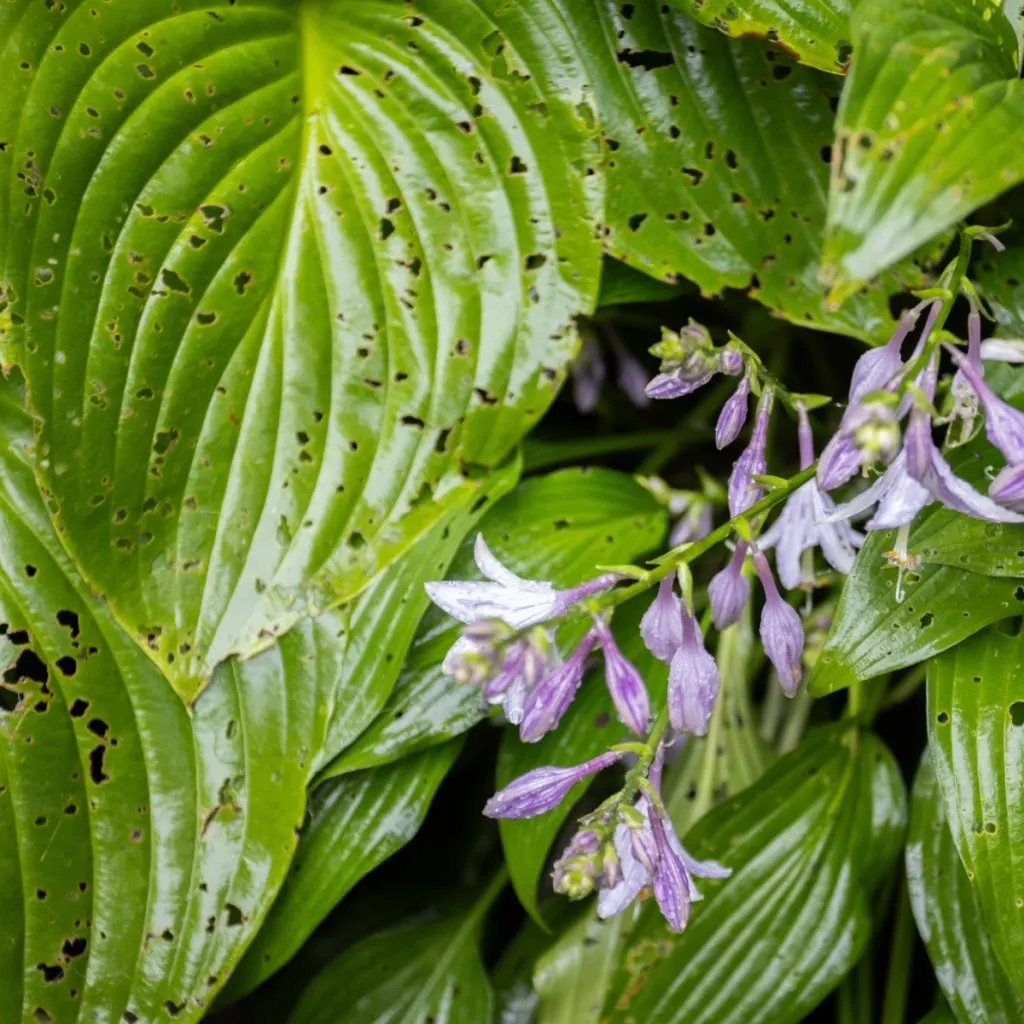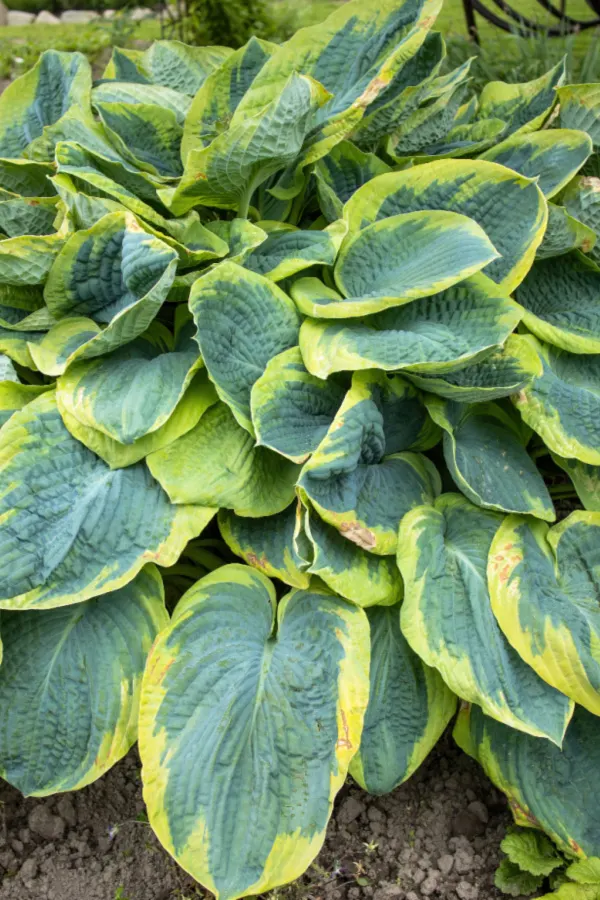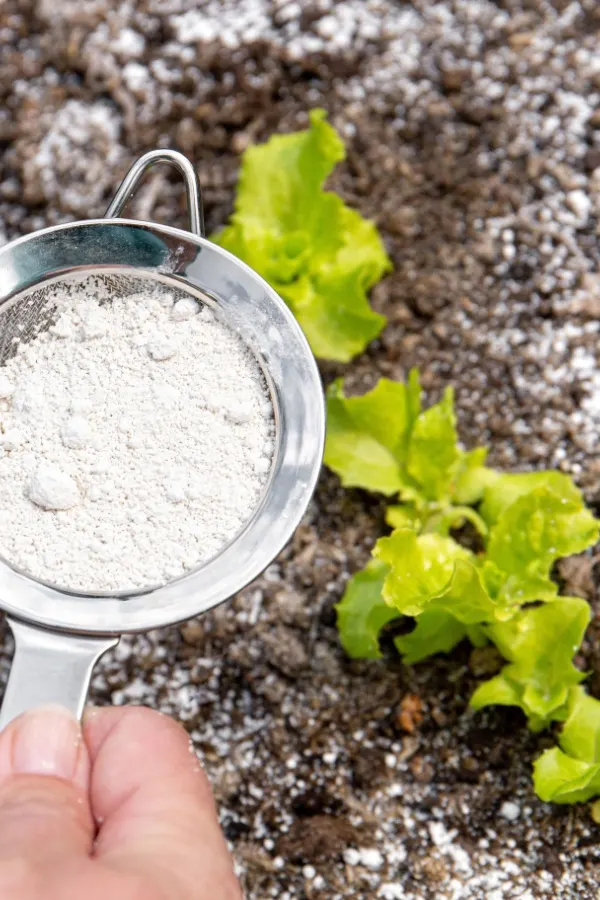Looking for a few simple ways to keep your hostas safe from insects, deer, and other pests this summer – all without having to resort to using harsh chemicals and sprays?
Hostas are one of the most popular shade perennials around. The cold-hardy plants are available in a wide range of colors, sizes, and textures and don’t require much in the way of maintenance to keep them looking stunning from spring until the first frost. That is, if you can keep the pests away!
More so than many other perennial plants, hostas often become the victim of insect and animal pest damage. In fact, hostas are often known for being a great treat for roaming deer and rabbits. But even tinier pests like insects, slugs, snails, grasshoppers, and cutworms can quickly ruin otherwise healthy plants.

Thankfully, there are a few simple methods you can use to keep all of these pests from completely destroying your hostas. Some of these methods work great on their own, while others can be used together for a great all-around option for pest control.
3 Ways To Keep Hostas Safe From Insects & Other Pests
When it comes to keeping hostas looking good, it’s best to start treating plants as soon as you first notice any damage. The longer you wait, the bigger your pest problem can quickly become. This is especially the case when you are dealing with insects that tend to reproduce rapidly during the summer months.
With chewing insects, you will often see holes in the leaves. On the other hand, if the leaves are almost completely gone down to the ground, you are likely looking at deer or rabbit damage. Wilted plants or foliage that is weak and doesn’t grow well is likely the result of an underground pest.
Depending on what pest or insect you are dealing with will determine what course of action you take below. Let’s first take a look at hot pepper spray, which is one of the best natural ways to keep the foliage of your hostas looking great from deer, rabbits and other hungry animals!

Hot Pepper Spray – How To Keep Hostas Safe From Insects & Other Pests
Making a homemade hot pepper spray works great for pests that eat the foliage. It is especially effective at preventing deer and rabbits from causing damage while not harming the plants themselves. You can also dump it around the root zone to discourage hungry voles.
To make a hot pepper spray, you will need just four ingredients: water, hot pepper, garlic and olive oil or liquid dish soap
Start by adding 5 to 6 chopped hot peppers and one half of a gallon of water to a large pan and bring it to a simmer. You can use any hot pepper such as cayenne, jalapeno or even habanero. If you don’t have fresh peppers, add in 3 tablespoons of hot pepper powder for this portion.
Next, add in 3 cloves of chopped garlic for extra heat and scent. Allow the mixture to simmer for about 15 minutes, stirring occasionally. Remove the mixture from the heat and allow it to seep for 24 hours. Then strain the solids from the liquid and add to a spray bottle. Product Link: Chapin Half Gallon Handheld Multi-Purpose Garden Pump Sprayer
To finish, add in a couple of drops of olive oil or liquid dish soap into the spray bottle before spraying. This will help the mixture cling to the foliage of the hostas for better protection.
Wearing gloves and eye protection, apply the solution to your hosta plants early in the morning or late at night. Reapply the solution every 3 to 5 days or after rain or hand watering. See: How To Make & Use Hot Pepper Spray

Using Diatomaceous Earth (DE) – How To Keep Hostas Safe From Insects & Other Pests
Dealing with small insects eating your plants? DE is a great way to stop them! DE, otherwise known as Diatomaceous earth, is a superfine substance that you can use to organically eliminate pests of all kinds. It is essentially fossilized remains of tiny aquatic creatures. Affiliate Link: Harris Diatomaceous Earth Food Grade
The best part is that food-grade DE does not work by poisoning creatures so they do not need to consume your hosta plants in order to be effective. Instead, DE has razor-like edges that cut into the body of slugs, snails, aphids, and other insects and dries them out.

You can sprinkle DE directly onto the hostas themselves but it works better to create a path around your plants. When insects and pests travel across to get to your plants, they simply can’t make it there safely. Like the hot pepper spray, reapply DE after a moderate rain or watering of your flowerbeds.
Neem Oil – How To Keep Hostas Safe From Insects & Other Pests
Another great way to keep your hostas safe from insects is to use neem oil. This natural product is 100% organic and when used correctly, is safe for pollinators, your pets and your family. Affiliate Link: Harris Neem Oil Spray for Plants, Cold Pressed Ready to Use
You can purchase neem oil ready-to-use or you can create a simple spray using concentrated neem oil. All it takes is water and a few drops of liquid dish soap. Be sure to read the label to know exactly how to mix your specific solution. Once ready, you can spray neem oil all over your hosta plants.
It works to control insects in three unique ways. First, it eliminates many immature insects, eggs, and larvae immediately upon contact. Second, it also interferes with older insect’s ability to mate and reproduce. But it also keeps insects from eating the leaves that have been sprayed.
It might take a couple of applications, but in just a week or two, with neem oil, you will be able to keep your hostas safe from insects.
Here’s to keeping your hostas safe from damage this summer. And to keeping your hostas looking great right up until the first frost!
This Is My Garden
Follow Our Facebook Page For Great Gardening Tips And Advice! This Is My Garden Facebook Page
This Is My Garden is a garden website created by gardeners, for gardeners. Jim and Mary Competti have been writing gardening, DIY and recipe articles and books and speaking for over 15 years from their 46 acre Ohio farm. They publish three articles every week, 52 weeks a year. Sign up today to follow via email, or follow along!
